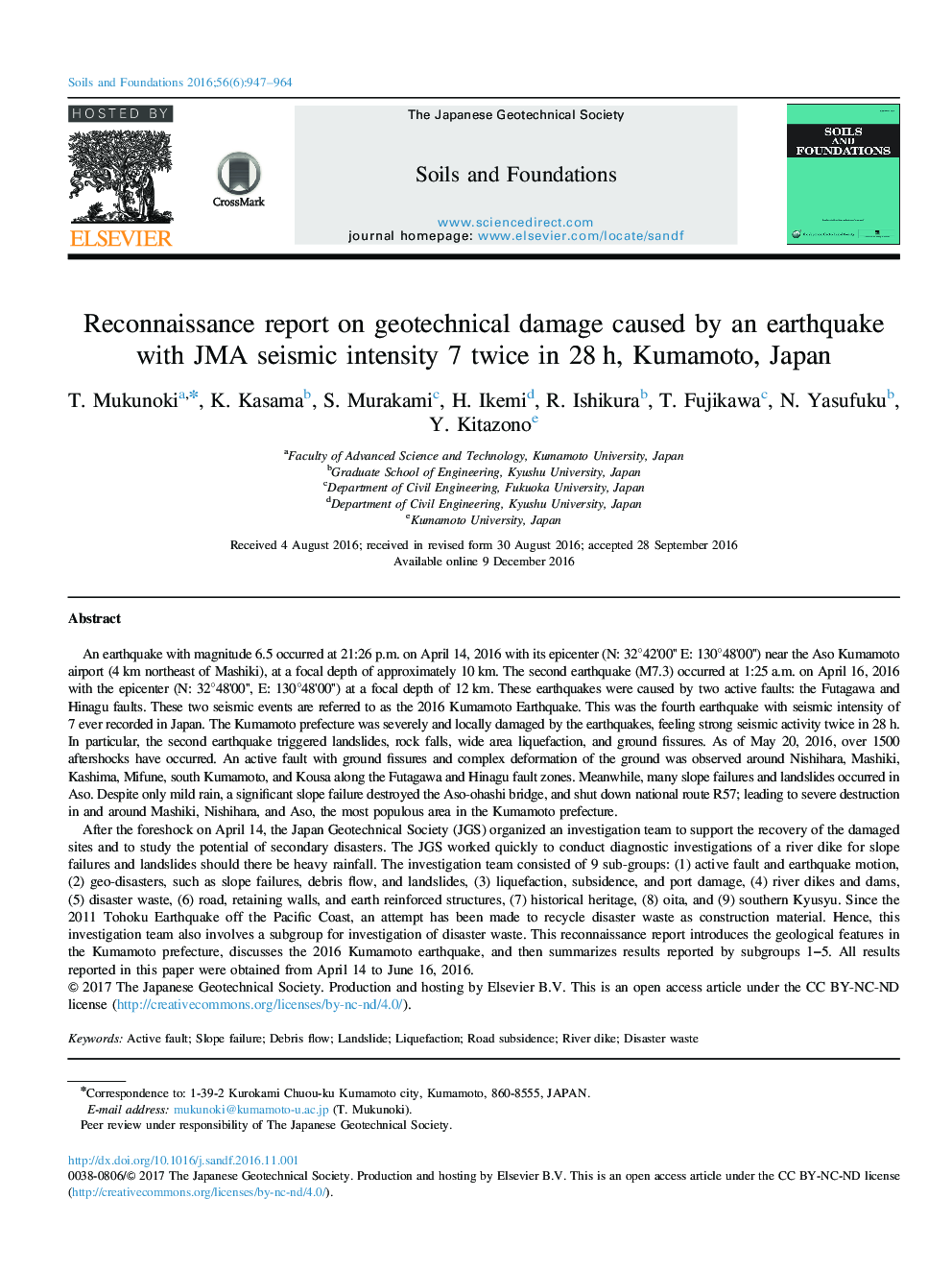| کد مقاله | کد نشریه | سال انتشار | مقاله انگلیسی | نسخه تمام متن |
|---|---|---|---|---|
| 4927697 | 513333 | 2016 | 18 صفحه PDF | دانلود رایگان |

An earthquake with magnitude 6.5 occurred at 21:26 p.m. on April 14, 2016 with its epicenter (N: 32°42'00'' E: 130°48'00'') near the Aso Kumamoto airport (4 km northeast of Mashiki), at a focal depth of approximately 10 km. The second earthquake (M7.3) occurred at 1:25 a.m. on April 16, 2016 with the epicenter (N: 32°48'00'', E: 130°48'00'') at a focal depth of 12 km. These earthquakes were caused by two active faults: the Futagawa and Hinagu faults. These two seismic events are referred to as the 2016 Kumamoto Earthquake. This was the fourth earthquake with seismic intensity of 7 ever recorded in Japan. The Kumamoto prefecture was severely and locally damaged by the earthquakes, feeling strong seismic activity twice in 28 h. In particular, the second earthquake triggered landslides, rock falls, wide area liquefaction, and ground fissures. As of May 20, 2016, over 1500 aftershocks have occurred. An active fault with ground fissures and complex deformation of the ground was observed around Nishihara, Mashiki, Kashima, Mifune, south Kumamoto, and Kousa along the Futagawa and Hinagu fault zones. Meanwhile, many slope failures and landslides occurred in Aso. Despite only mild rain, a significant slope failure destroyed the Aso-ohashi bridge, and shut down national route R57; leading to severe destruction in and around Mashiki, Nishihara, and Aso, the most populous area in the Kumamoto prefecture.After the foreshock on April 14, the Japan Geotechnical Society (JGS) organized an investigation team to support the recovery of the damaged sites and to study the potential of secondary disasters. The JGS worked quickly to conduct diagnostic investigations of a river dike for slope failures and landslides should there be heavy rainfall. The investigation team consisted of 9 sub-groups: (1) active fault and earthquake motion, (2) geo-disasters, such as slope failures, debris flow, and landslides, (3) liquefaction, subsidence, and port damage, (4) river dikes and dams, (5) disaster waste, (6) road, retaining walls, and earth reinforced structures, (7) historical heritage, (8) oita, and (9) southern Kyusyu. Since the 2011 Tohoku Earthquake off the Pacific Coast, an attempt has been made to recycle disaster waste as construction material. Hence, this investigation team also involves a subgroup for investigation of disaster waste. This reconnaissance report introduces the geological features in the Kumamoto prefecture, discusses the 2016 Kumamoto earthquake, and then summarizes results reported by subgroups 1-5. All results reported in this paper were obtained from April 14 to June 16, 2016.
Journal: Soils and Foundations - Volume 56, Issue 6, December 2016, Pages 947-964